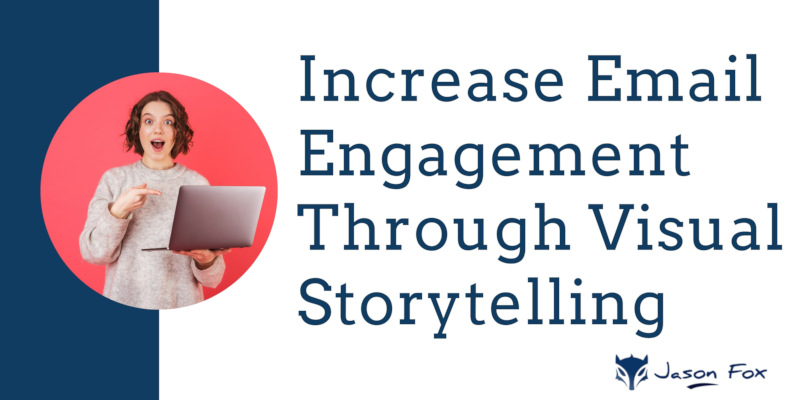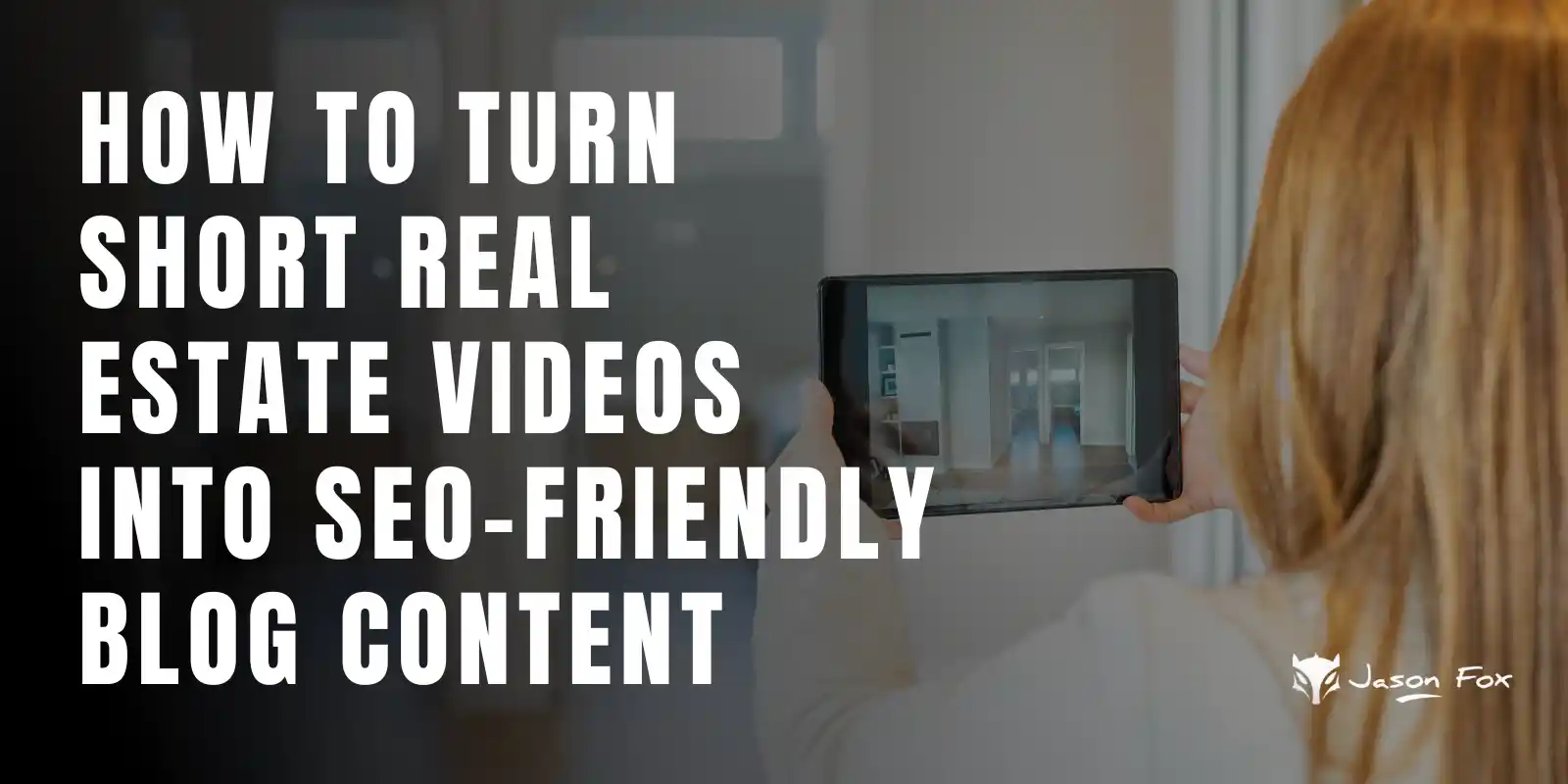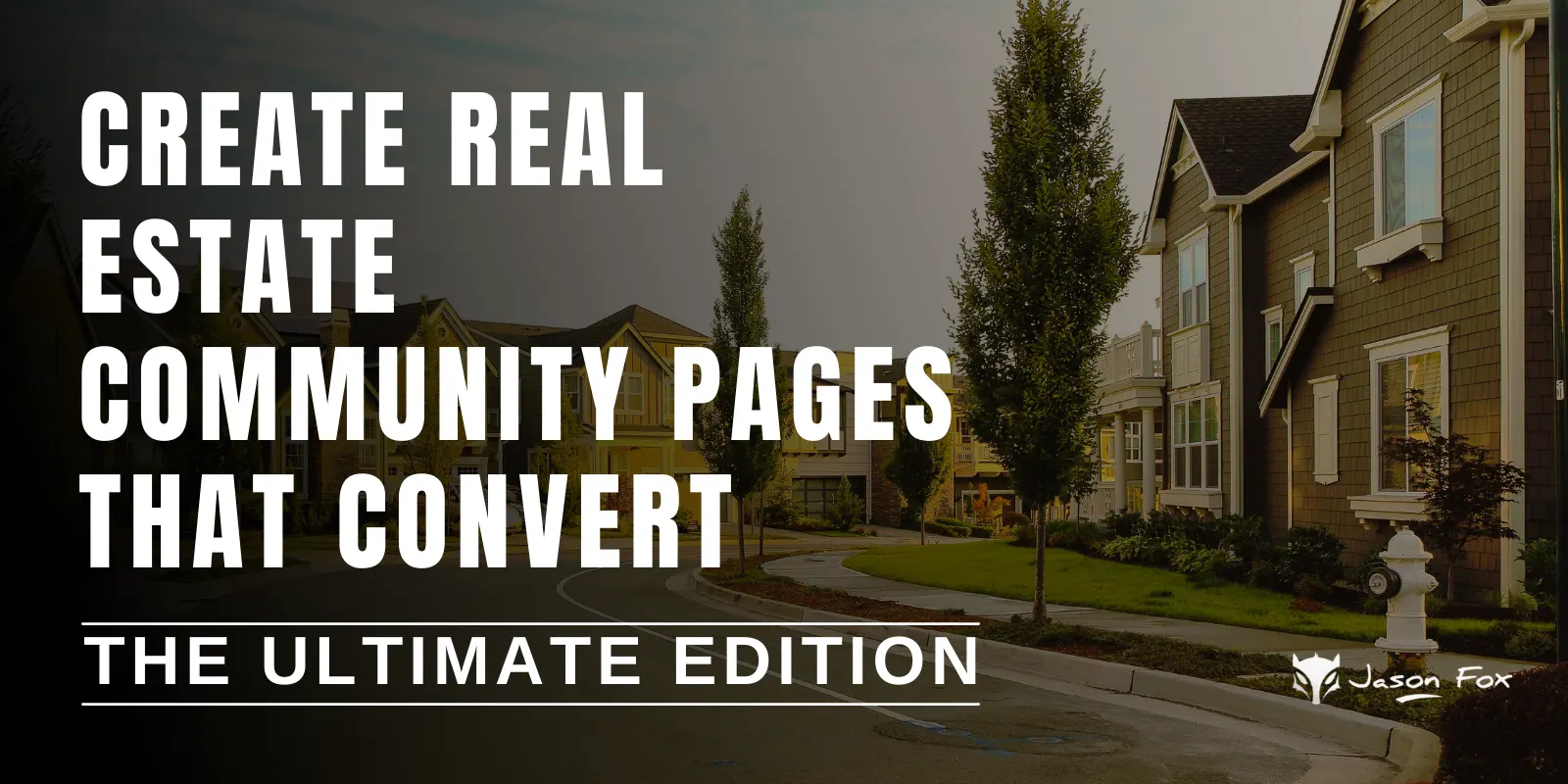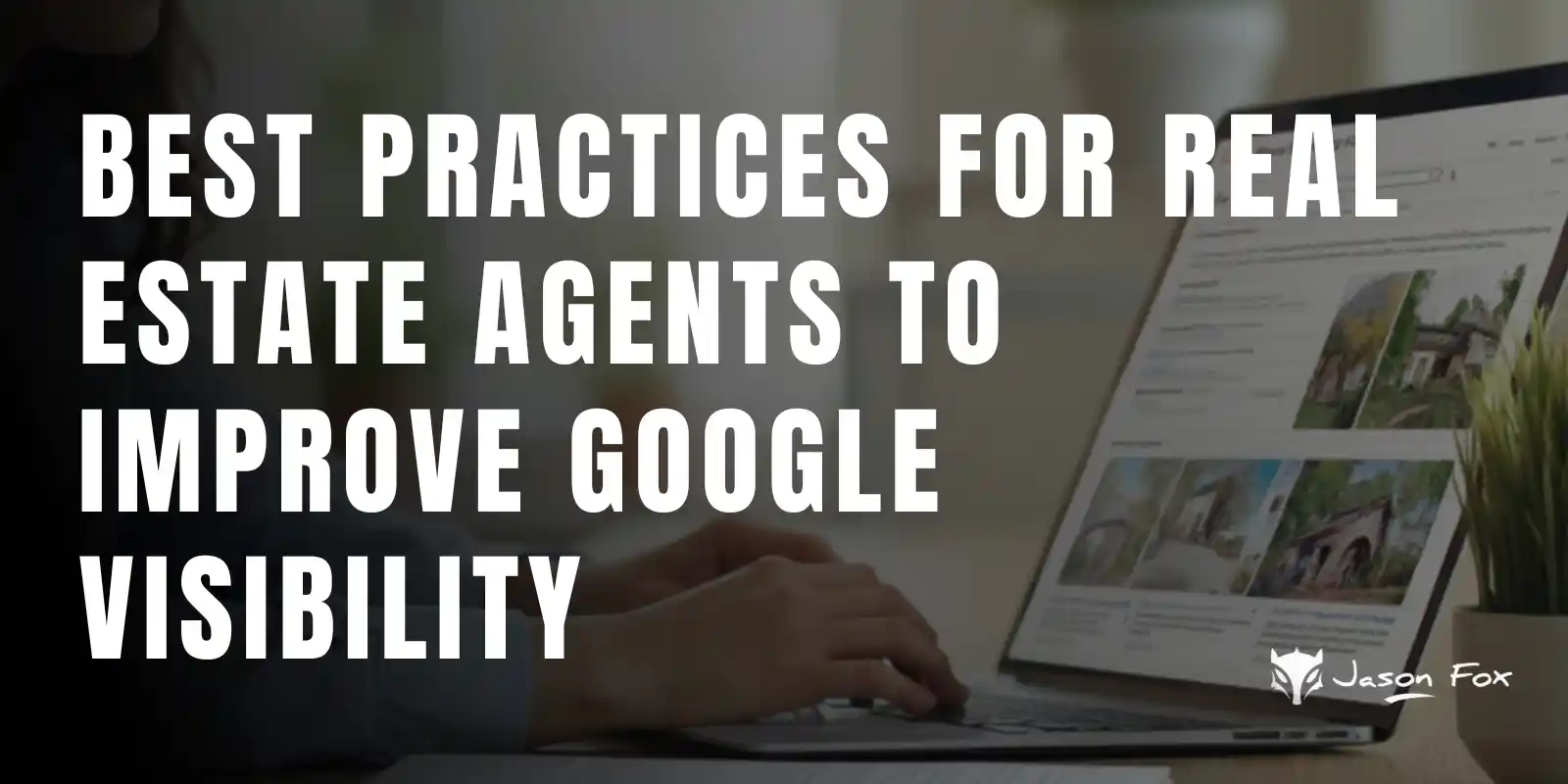Increase Email Engagement Through Visual Storytelling
Email marketing is all about building relationships with your subscribers. Once the interaction stops – especially with your real estate leads – everything falls apart, no matter how big your email list is.
In fact, low or non-existent engagement can take place even if you’re still actively sending them emails.
Aside from sending them spammy emails, one of the biggest reasons why they don’t respond to your messages is they don’t care about what you have to say.
Yes, they subscribed to your list for real estate opportunities. However, they’ll soon unsubscribe if you don’t give them something to hold on to.
One of the best ways to take hold of their attention is through storytelling. And we’re not just talking here of stories they can read – we’re referring to emails of stories they can see.
In this post, we’ll look at visual storytelling as a device to help increase the open and click-through rates of your email campaigns. This way, you can breathe new life into your email list and receive replies from them.
What is Visual Storytelling?
Visual storytelling is a narrative device in marketing that puts the customer (in this case, the email subscriber) at the heart of the story. More importantly, it uses visual elements to help marketers weave a more compelling narrative.
Examples of visual content that real estate agents can use in concocting a story for their email campaigns are as follows:
- Images – Pictures of the property for sale or photos of yourself should help create a more personalized experience with your subscribers.
- Video – Create a video of yourself presenting the featured properties to your subscribers and embed them into your email instead of linking to them.
- GIFs/cinemagraphs – Use these moving pictures to emphasize a point in your email or convey particular emotion readers are feeling.
- Infographics/presentations – Show statistics or slides from your presentation regarding the real estate industry to prove a point and help move the story forward.
At the same time, it’s not just about the images used in this case. It’s how you use these images to paint your story.
You need to build a story that puts your audience in the driver’s seat and drives them through your buyer’s journey. Ultimately, you want to turn your leads into clients, but that won’t happen if you don’t have a good story to tell.
Why is Visual Storytelling Important?
Storytelling in general allows marketers to connect with their audience on a deeper level. However, it becomes even more compelling if you can integrate visual elements into your campaigns.
Below are reasons that explain the value that visual storytelling wields.
Process Information Faster
People process visual content such as images and videos 60,000 times faster than words. As the saying goes, a picture is worth a thousand words (or 60,000 in this case).
This reason should be enough to convince marketers that using visuals in their marketing campaigns should help communicate their message much better to their audience.
Breaks Down Complex Ideas into Simpler Messages
For example, if you have a campaign that’s difficult or too complex to share through words, visual content can help break down the message into bite-sized and digestible pieces.
Expect the message to be fully received and understood by your recipients. As a result, your campaign leaves a more lasting impact on them moving forward.
Create Unique Experiences for Your Segments
Each type of content serves a specific purpose and goal towards the betterment of your real estate business. On one hand, blog posts are at the ToFu (top of the funnel) stage. Their goal is to help increase your online presence by ranking for your target keywords to generate leads and clients for your business.
On the other, the BoFu (below the funnel) stage is where you can find email campaigns. Their audiences are subscribers who are familiar with your business but need more convincing to become your clients or customers. The purpose of your campaigns, therefore, is to convince people to convert into more than just leads.
Since each content type is in different stages of your sales funnel, the objectives of each are not the same. And to help bring them down deeper into your funnel, you need to implement storytelling unique to each content type. How you weave a compelling email campaign for people in each stage of your funnel will dictate how they move along your sales funnel.
How to Use Visual Storytelling to Boost Email Open and CTR Rates
Now that you have a better understanding of how visual storytelling works, it’s time to apply it in the context of email marketing.
Since we’re dealing with prospects in the BoFu stage, you want people to take action with the emails you sent. This starts with getting more people to open the email and read its content first. From there, the email should compel them to perform an action like clicking on a link.
With these objectives in mind, below are ways how visual storytelling can play a critical role in the success of your emails.
Segment Your Audience
Even if your subscribers are at the same stage in the same funnel, you don’t paint them with the same brush.
It’s highly possible that there are subscribers in your email list that signed up for different reasons. Maybe some are looking to sell their property with your help while others want access to your list of properties.
At this point, it’s important to determine how and why they signed up. Using your email software’s list management feature, segment each one into groups and profile each one. Doing so allows you to send only the most relevant emails to the right people.
Therefore, the email campaign to be launched to property buyers should be different for sellers. And since the purpose of each campaign to be sent to each segment is unique, so will the visual storytelling be.
Determine the Tone of Your Email Campaign
Who your buyer persona is should dictate the general tone that your campaigns will be having. Breaking down your persona into demographics such as age, hobbies, desires, interests, and others will help you shape the right tone for your emails. Using this data allows you to make deliberate choices for your email campaigns moving forward.
This goes hand in hand with your brand as well. The core values and business objectives you have should attract the intended buyer persona you have developed.
For example, if you’re a professional brand, you want to maintain and communicate this professionalism across your emails as well.
That means, in the context of visual storytelling, sharing presentations, charts, and infographics should help engage your audience. These visual content types are the perfect fit to your demographics and your brand journalism.
On the other hand, if you have a more fun brand that’s in touch with the latest trends, using a more casual tone and approach for your campaigns is ideal. Therefore, you are free to use more informal photos of yourself. You can even insert GIFs in email if your target audience is up for it.
By setting up your tone, you can move to the next step of stitching your campaign together with a story.
Putting Everything Together With Stories
At this point, you should have everything you need to tell stories to your subscribers. However, there’s no one-size-fits-all storytelling template you can use across your segments like a free trial template. You need to take time to formulate the pain for your campaigns to ensure their success.
To repeat, we want to put subscribers in the front seat as they take the buyer’s journey that would hopefully result in a sale. To help you build the skeleton of your story, ask yourself these questions:
- What is/are the pain point/s of my audience? Are sellers having problems setting the right price for their property in the market? Or are buyers being priced out for sought-after properties in desirable areas? There are many pain points to choose from for buyers and sellers, so make sure to select one per campaign.
- What language do they understand the best? Going back to tone, you need to align your email campaign with your brand and audience demographics. Identifying how they communicate and express themselves gives you insights into how you can share the story more effectively in your emails.
- How do they see themselves? Knowing what the majority of your segment feels as buyers or sellers allows you to position your story where most of them can resonate with.
- How can your services solve their problems? Your purpose in this story is to bridge the gap between points A and B so your subscribers can get to their desired destination. Therefore, by leading the story towards what you can do as a real estate agent and how you can help them, you also lead them to hire you for your services.
As you progress with the story, make sure to never promote or sell your product or service. It’s best to let the subscribers, as heroes of their own story, make the decision for themselves.
Additional Tips to Crafting Winning Email Campaigns
As mentioned, storytelling is just part of the overall campaign. You still have to worry about the actual emails and how you can ensure that your subscribers will open them.
Below is a quick rundown of the best email marketing practices you should observe on all your drip campaigns:
- Write curiosity-driven headlines that encourage recipients to open your email and find out about them. Just make sure to deliver on your promise and never leave subscribers hanging.
- Put everything in your email’s first sentence to get recipients to take notice.
- Proceed with your story here. Use techniques like bucket brigade to help readers on their toes and read until the very end.
- Showcase your call to action. Each email should have a single CTA to prevent distracting recipients with multiple choices. Include the CTA in the middle of your story (to help tie the story with your CTA) and at the end. If you don’t have a particular CTA to include, use email signature for sales so they can still connect with you in more meaningful ways.
- Use images. Here’s where you can increase the click-through rate and take it to a whole new level. Use images according to your story. Using GIFs from GIPHY help break the tension and draw out a particular emotion from readers. For more professional readers, featuring a portion of your infographic or presentation could serve as a curiosity driver (similar to the headline).
There are other email marketing practices you should observe with your business. But the ones listed above should get you started with your campaigns and generate results.
Conclusion
Building a cohesive narrative that puts the audience front and center is an excellent way to get through them with your email marketing campaigns. And to make them even more effective, you should use visuals to tell a story and increase engagement.
As mentioned, visual storytelling will only be as good as how it aligns with your brand and your audience demographics. Planning your campaigns with these variables in mind should ensure the success of your emails.
post contents
Email marketing is all about building relationships with your subscribers. Once the interaction stops – especially with your real estate leads – everything falls apart, no matter how big your email list is.
In fact, low or non-existent engagement can take place even if you’re still actively sending them emails.
Aside from sending them spammy emails, one of the biggest reasons why they don’t respond to your messages is they don’t care about what you have to say.
Yes, they subscribed to your list for real estate opportunities. However, they’ll soon unsubscribe if you don’t give them something to hold on to.
One of the best ways to take hold of their attention is through storytelling. And we’re not just talking here of stories they can read – we’re referring to emails of stories they can see.
In this post, we’ll look at visual storytelling as a device to help increase the open and click-through rates of your email campaigns. This way, you can breathe new life into your email list and receive replies from them.
What is Visual Storytelling?
Visual storytelling is a narrative device in marketing that puts the customer (in this case, the email subscriber) at the heart of the story. More importantly, it uses visual elements to help marketers weave a more compelling narrative.
Examples of visual content that real estate agents can use in concocting a story for their email campaigns are as follows:
- Images – Pictures of the property for sale or photos of yourself should help create a more personalized experience with your subscribers.
- Video – Create a video of yourself presenting the featured properties to your subscribers and embed them into your email instead of linking to them.
- GIFs/cinemagraphs – Use these moving pictures to emphasize a point in your email or convey particular emotion readers are feeling.
- Infographics/presentations – Show statistics or slides from your presentation regarding the real estate industry to prove a point and help move the story forward.
At the same time, it’s not just about the images used in this case. It’s how you use these images to paint your story.
You need to build a story that puts your audience in the driver’s seat and drives them through your buyer’s journey. Ultimately, you want to turn your leads into clients, but that won’t happen if you don’t have a good story to tell.
Why is Visual Storytelling Important?
Storytelling in general allows marketers to connect with their audience on a deeper level. However, it becomes even more compelling if you can integrate visual elements into your campaigns.
Below are reasons that explain the value that visual storytelling wields.
Process Information Faster
People process visual content such as images and videos 60,000 times faster than words. As the saying goes, a picture is worth a thousand words (or 60,000 in this case).
This reason should be enough to convince marketers that using visuals in their marketing campaigns should help communicate their message much better to their audience.
Breaks Down Complex Ideas into Simpler Messages
For example, if you have a campaign that’s difficult or too complex to share through words, visual content can help break down the message into bite-sized and digestible pieces.
Expect the message to be fully received and understood by your recipients. As a result, your campaign leaves a more lasting impact on them moving forward.
Create Unique Experiences for Your Segments
Each type of content serves a specific purpose and goal towards the betterment of your real estate business. On one hand, blog posts are at the ToFu (top of the funnel) stage. Their goal is to help increase your online presence by ranking for your target keywords to generate leads and clients for your business.
On the other, the BoFu (below the funnel) stage is where you can find email campaigns. Their audiences are subscribers who are familiar with your business but need more convincing to become your clients or customers. The purpose of your campaigns, therefore, is to convince people to convert into more than just leads.
Since each content type is in different stages of your sales funnel, the objectives of each are not the same. And to help bring them down deeper into your funnel, you need to implement storytelling unique to each content type. How you weave a compelling email campaign for people in each stage of your funnel will dictate how they move along your sales funnel.
How to Use Visual Storytelling to Boost Email Open and CTR Rates
Now that you have a better understanding of how visual storytelling works, it’s time to apply it in the context of email marketing.
Since we’re dealing with prospects in the BoFu stage, you want people to take action with the emails you sent. This starts with getting more people to open the email and read its content first. From there, the email should compel them to perform an action like clicking on a link.
With these objectives in mind, below are ways how visual storytelling can play a critical role in the success of your emails.
Segment Your Audience
Even if your subscribers are at the same stage in the same funnel, you don’t paint them with the same brush.
It’s highly possible that there are subscribers in your email list that signed up for different reasons. Maybe some are looking to sell their property with your help while others want access to your list of properties.
At this point, it’s important to determine how and why they signed up. Using your email software’s list management feature, segment each one into groups and profile each one. Doing so allows you to send only the most relevant emails to the right people.
Therefore, the email campaign to be launched to property buyers should be different for sellers. And since the purpose of each campaign to be sent to each segment is unique, so will the visual storytelling be.
Determine the Tone of Your Email Campaign
Who your buyer persona is should dictate the general tone that your campaigns will be having. Breaking down your persona into demographics such as age, hobbies, desires, interests, and others will help you shape the right tone for your emails. Using this data allows you to make deliberate choices for your email campaigns moving forward.
This goes hand in hand with your brand as well. The core values and business objectives you have should attract the intended buyer persona you have developed.
For example, if you’re a professional brand, you want to maintain and communicate this professionalism across your emails as well.
That means, in the context of visual storytelling, sharing presentations, charts, and infographics should help engage your audience. These visual content types are the perfect fit to your demographics and your brand journalism.
On the other hand, if you have a more fun brand that’s in touch with the latest trends, using a more casual tone and approach for your campaigns is ideal. Therefore, you are free to use more informal photos of yourself. You can even insert GIFs in email if your target audience is up for it.
By setting up your tone, you can move to the next step of stitching your campaign together with a story.
Putting Everything Together With Stories
At this point, you should have everything you need to tell stories to your subscribers. However, there’s no one-size-fits-all storytelling template you can use across your segments like a free trial template. You need to take time to formulate the pain for your campaigns to ensure their success.
To repeat, we want to put subscribers in the front seat as they take the buyer’s journey that would hopefully result in a sale. To help you build the skeleton of your story, ask yourself these questions:
- What is/are the pain point/s of my audience? Are sellers having problems setting the right price for their property in the market? Or are buyers being priced out for sought-after properties in desirable areas? There are many pain points to choose from for buyers and sellers, so make sure to select one per campaign.
- What language do they understand the best? Going back to tone, you need to align your email campaign with your brand and audience demographics. Identifying how they communicate and express themselves gives you insights into how you can share the story more effectively in your emails.
- How do they see themselves? Knowing what the majority of your segment feels as buyers or sellers allows you to position your story where most of them can resonate with.
- How can your services solve their problems? Your purpose in this story is to bridge the gap between points A and B so your subscribers can get to their desired destination. Therefore, by leading the story towards what you can do as a real estate agent and how you can help them, you also lead them to hire you for your services.
As you progress with the story, make sure to never promote or sell your product or service. It’s best to let the subscribers, as heroes of their own story, make the decision for themselves.
Additional Tips to Crafting Winning Email Campaigns
As mentioned, storytelling is just part of the overall campaign. You still have to worry about the actual emails and how you can ensure that your subscribers will open them.
Below is a quick rundown of the best email marketing practices you should observe on all your drip campaigns:
- Write curiosity-driven headlines that encourage recipients to open your email and find out about them. Just make sure to deliver on your promise and never leave subscribers hanging.
- Put everything in your email’s first sentence to get recipients to take notice.
- Proceed with your story here. Use techniques like bucket brigade to help readers on their toes and read until the very end.
- Showcase your call to action. Each email should have a single CTA to prevent distracting recipients with multiple choices. Include the CTA in the middle of your story (to help tie the story with your CTA) and at the end. If you don’t have a particular CTA to include, use email signature for sales so they can still connect with you in more meaningful ways.
- Use images. Here’s where you can increase the click-through rate and take it to a whole new level. Use images according to your story. Using GIFs from GIPHY help break the tension and draw out a particular emotion from readers. For more professional readers, featuring a portion of your infographic or presentation could serve as a curiosity driver (similar to the headline).
There are other email marketing practices you should observe with your business. But the ones listed above should get you started with your campaigns and generate results.
Conclusion
Building a cohesive narrative that puts the audience front and center is an excellent way to get through them with your email marketing campaigns. And to make them even more effective, you should use visuals to tell a story and increase engagement.
As mentioned, visual storytelling will only be as good as how it aligns with your brand and your audience demographics. Planning your campaigns with these variables in mind should ensure the success of your emails.
Latest articles
Short real estate videos can be transformed into powerful blog content with the right strategy. Learn how to expand on video topics, incorporate SEO best practices, and create engaging posts that drive traffic and boost your search rankings.
Learn how to create real estate community pages that attract buyers, boost your local SEO, and establish you as a market expert. This ultimate guide covers content creation tips, the use of AI tools, and IDX integration to help your pages stand out in 2024.
To stay competitive in real estate, agents must prioritize SEO to improve their Google visibility. By implementing proven strategies like asking for reviews, creating relevant content, and focusing on local SEO, you can attract more clients and increase your online presence.
BECOME A MEMBER
Become A Free DIY Real Estate Marketing Member & Get Access To:
LARGEST COLLECTION OF
Real Estate Marketing e-Books, Guides, Templates, & whitepapers
ON THE INTERNET
+ OVER 70 How To Website Training Videos including; WordPress, Agent Evolution Themes, & IDX Broker
+ DIY Real Estate Marketing Tips and Strategies Delivered to Your Inbox
Share this article
Written by : jasonfox
Jason Fox - Real Estate Marketing
Business: We build WordPress Real Estate Websites with IDX
Me: #GoHawks, #BringBackTheSonics, #MaybeNextYearMariners, #ILoveMyKids #SeattleSunLover #SeattleWaterLover #BFF
Blog: Focuses on Wordpress Websites, Content Management, SEO Services, SEM Campaigns, Social Media Marketing, Email Marketing, Beautiful Design, IDX, and more.







